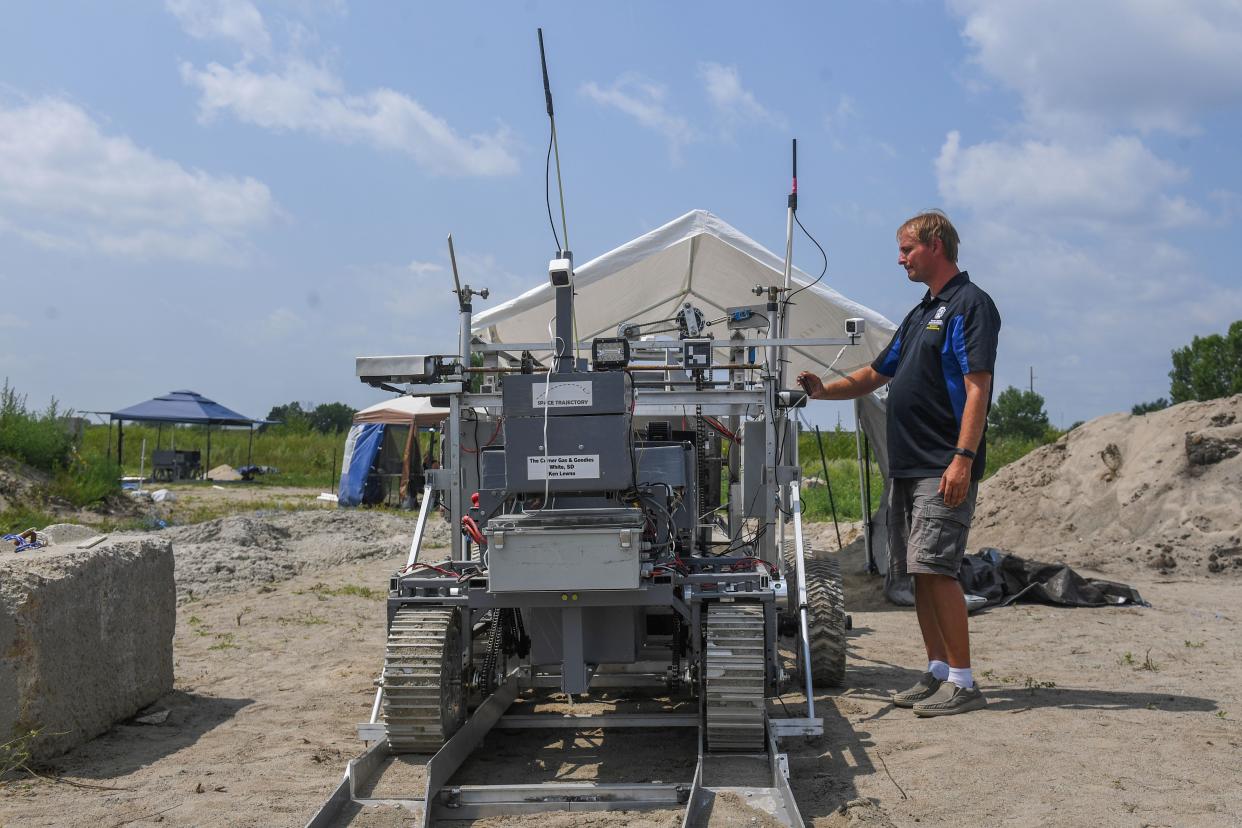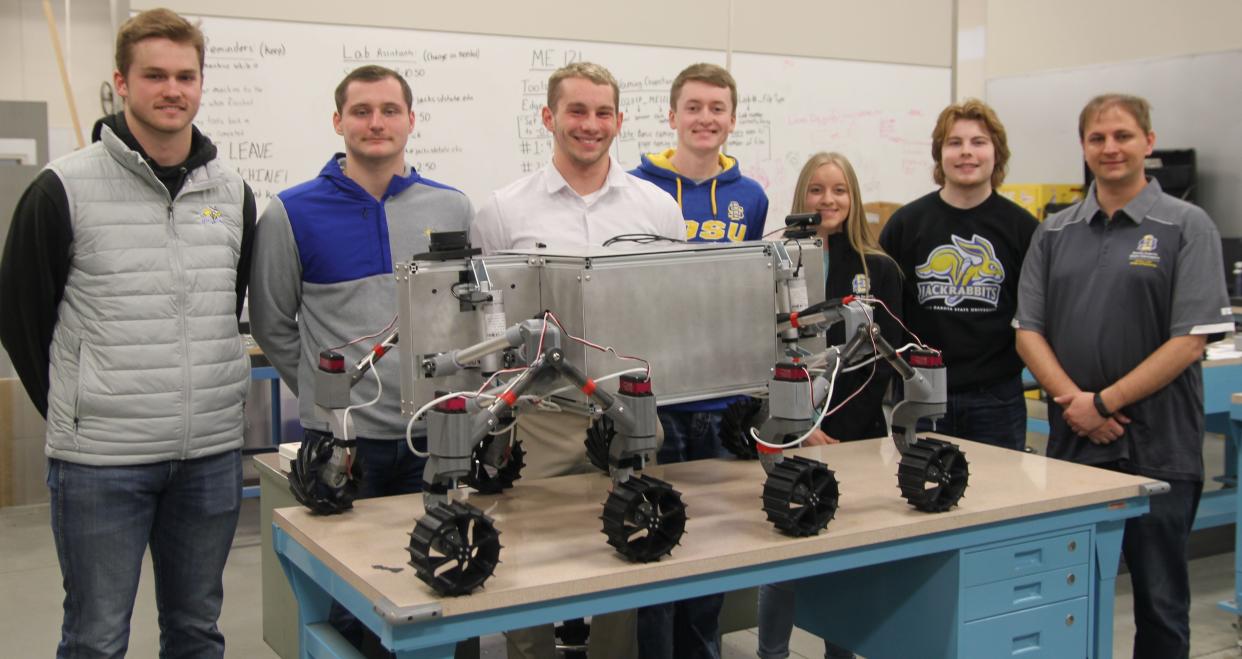SDSU teams advance to final stages of NASA competitions this summer
Two South Dakota State University teams are finalists for major NASA competitions this summer, SDSU announced this week.
The competitions are on the same dates, June 10-12, in different states, which means the faculty adviser for both teams, Todd Letcher, an associate professor in mechanical engineering, will only be able to attend one competition. He’s already committed to following the Break the Ice team to the competition in Alabama.
Break the Ice
SDSU’s Space Trajectory team is a finalist in NASA’s Break the Ice Lunar Challenge, which is part of NASA’s mission to develop new technology that could support a sustained human presence on the moon by the end of the decade.
SDSU’s team has been working on an excavation process that could be chosen by NASA to extract ice crystals buried under lunar soil on the moon.

The finals of the Break the Ice Lunar Challenge are June 10-12 in Huntsville, Alabama. SDSU is one of six finalists in that contest that includes colleges and corporations with a $1 million top prize and a $500,000 runner-up prize.
Space Trajectory includes Letcher as the faculty adviser, and students Allea Klauenberg, Austin Lohsandt, Ben Diersen, Ben Louwagie, Brock Heppner, Carter Waggoner, Dante Tarabelsi, Devin Lundberg, Elaine Hines, Eric Derr, John Ziegelski, Max Selbach, Parker Brandt, Tate Mueller, Tom Neumeister and Zac Bergjord.
Lunar crater prospector
The other team is a group of five mechanical engineering students who’ve designed a crater-exploring rover named POSEID-N (Prospecting Observation System for Exploration, Investigation, Discovery, and Navigation rover) that can explore rugged and permanently shadowed lunar south pole craters to search for water, ice and other resources.
This team includes team lead Delaney Baumberger, a senior from Blair, Nebraska; Alex Schaar, a senior from Sioux Falls; Dylan Stephens, a senior from Redfield; Aiden Carstensen, a sophomore from Cedar Rapids, Iowa; and Braxton McGrath, a sophomore from Amana, Iowa. Liam Murray serves as the graduate adviser, and Letcher serves as the faculty adviser for the team.

The SDSU team is one of 14 from across the U.S. that will compete in Cocoa Beach, Florida, for the RASC-AL (Revolutionary Aerospace Systems Concepts – Academic Linkage) competition, which has four categories. SDSU is competing in the large-scale lunar crater prospector category against Iowa State, Tulane, Maryland and Texas universities.
SDSU’s RASC-AL team from 2023 had the best entry in the lunar surface transporter vehicle category and was honored for building the best prototype of any of the four categories, an honor the 2024 team hopes to repeat, according to a press release from SDSU. The team will also face two of the same competitors — Maryland and Texas — that it competed against in 2023.
Students must write a full technical paper, create a poster board and prepare a 30-minute presentation to a panel of NASA and aerospace industry leaders, who will ask the students questions about their work.
The students have also submitted an invention disclosure for the design of their rover, the first step in the patent process.
This article originally appeared on Sioux Falls Argus Leader: SDSU teams advance to final stages of NASA competitions this summer
